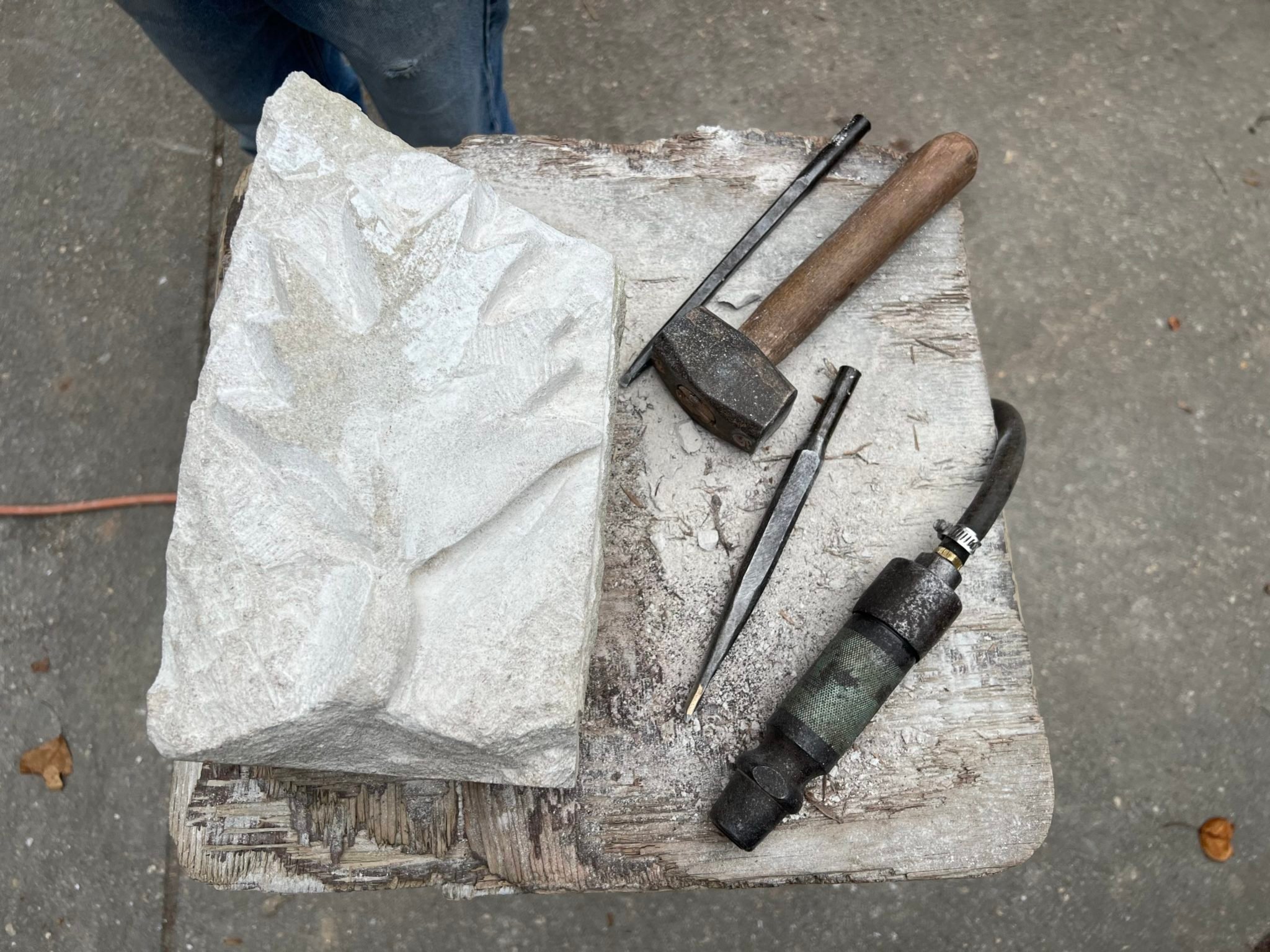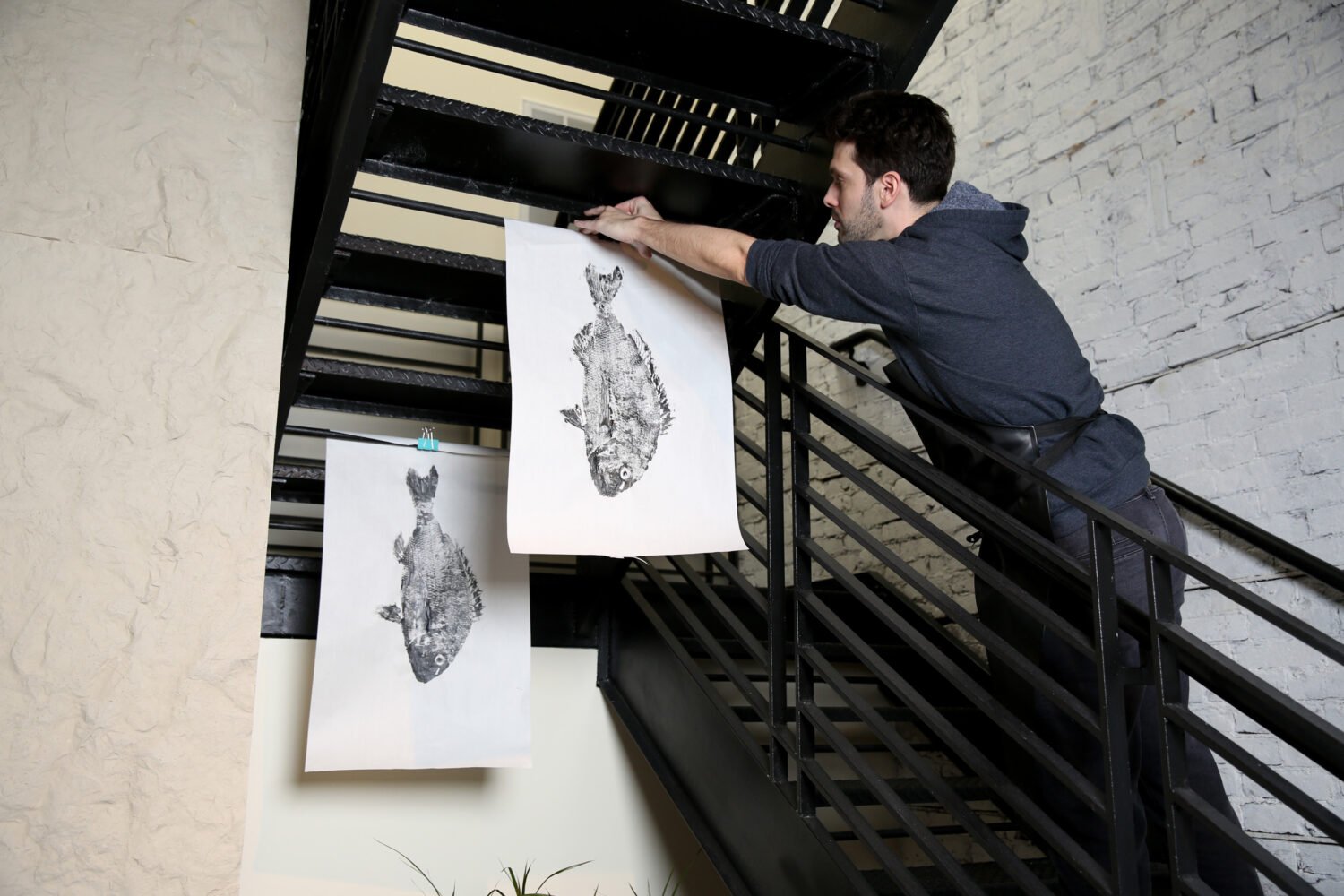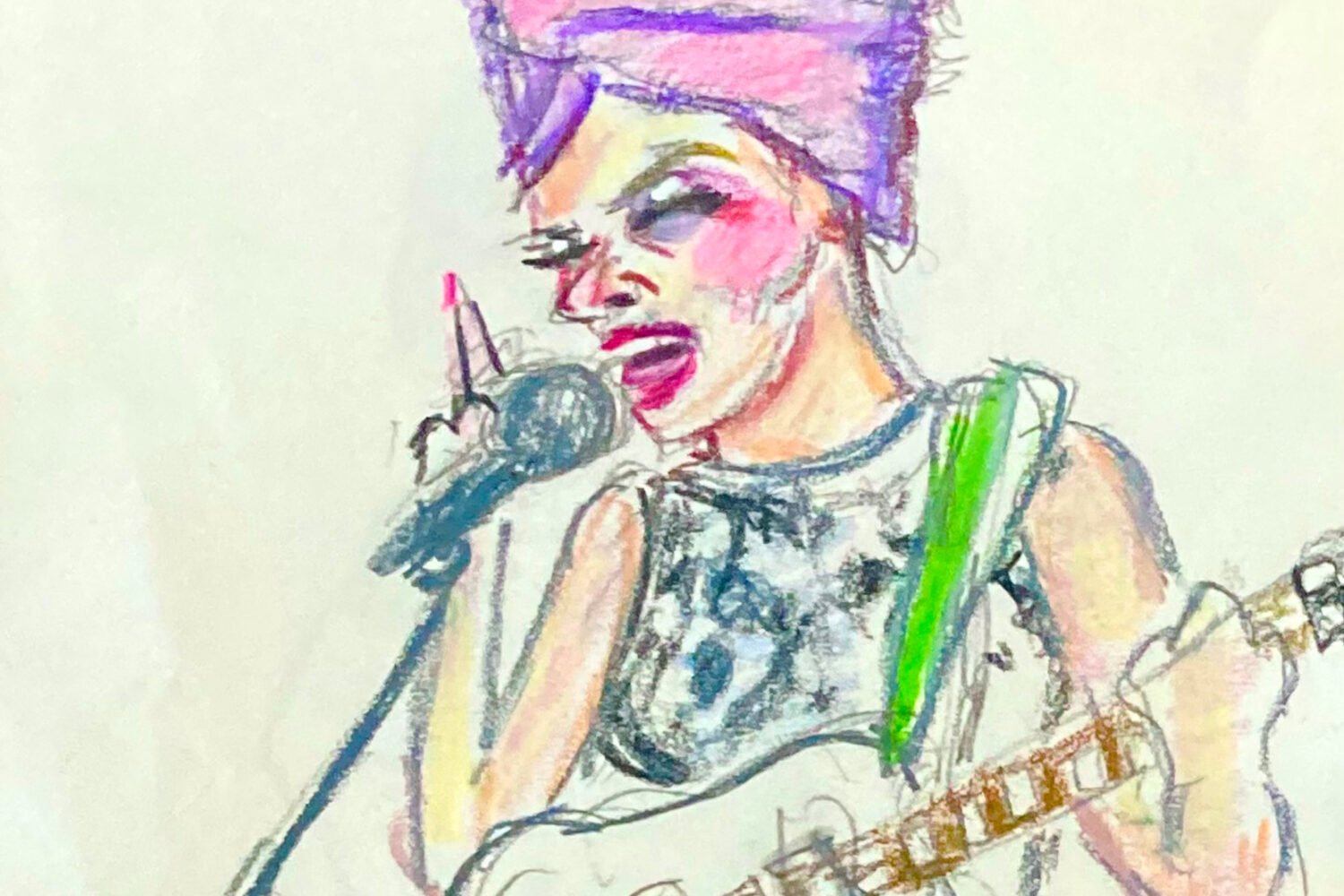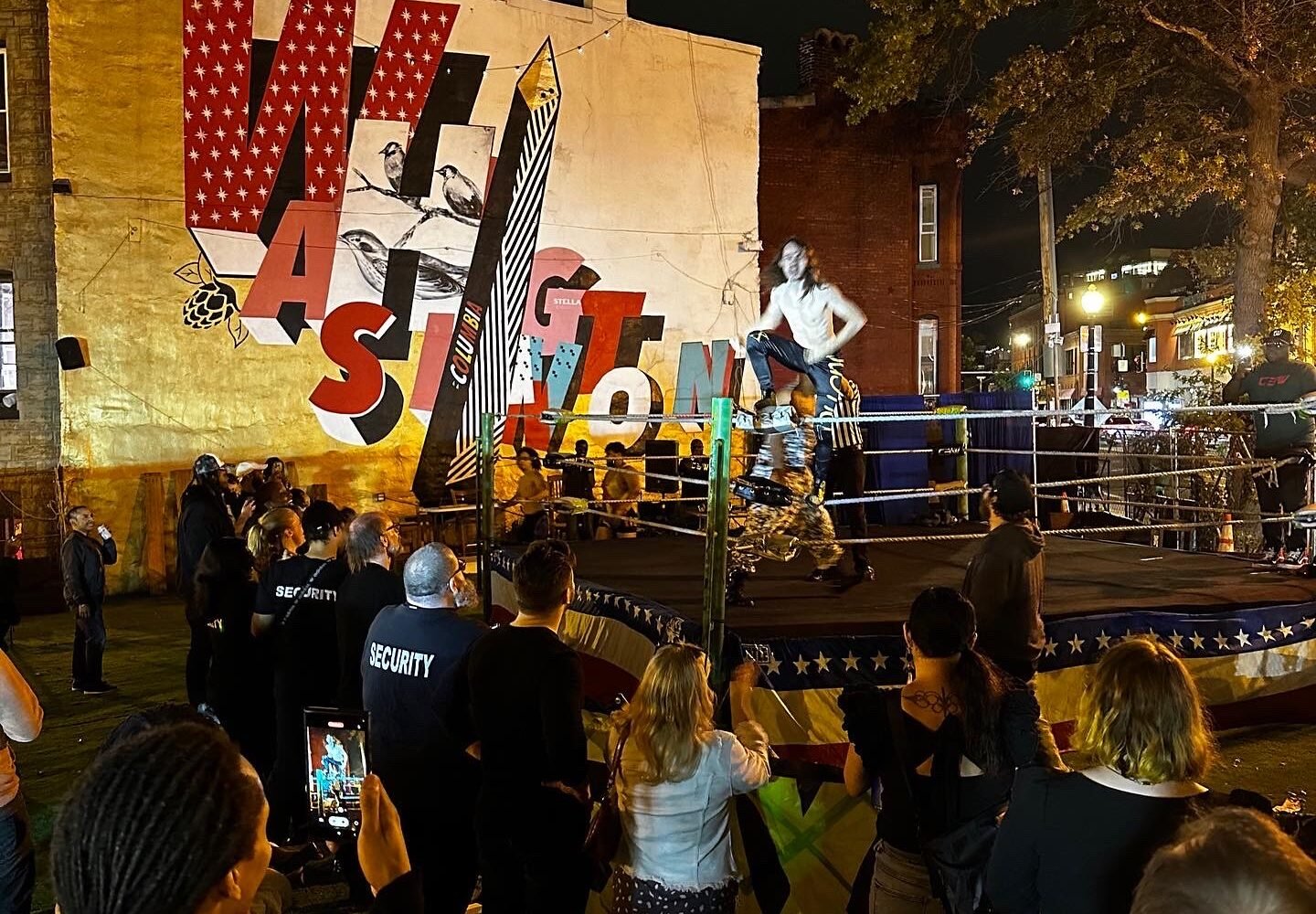Professional stone carver Clift “Andy” Seferlis can walk through Oak Hill Cemetery in Georgetown and, at a glance, identify which headstones were machine-made, ordered from a catalog, and which were carved by hand.
“The difference is obvious,” he says. He points them out as he navigates his way through the pathways, “Custom-made, catalog, catalog, custom-made.”
Seferlis has been coming to the cemetery and working on carving projects within it for years, ever since he studied as a stone-carving apprentice under his father, master carver and sculptor Constantine Seferlis. For the better part of 20 years, father and son carved stone together throughout DC.

Together they carved Hillwood Museum’s marble swan fountain—a project that took 18 months and 7,000 pounds of stone. They also collaborated on the creation of several mausoleums and memorials around Oak Hill. Independently, Seferlis’s father gained renown for his extensive work on DC landmarks, including the National Shrine, the Capitol, and the National Cathedral, where he carved some of the church’s distinctive gargoyles, among dozens of other features.
“There’s a lot of his work around the area,” Seferlis says of his father. “And it’s weird to kind of look at the—” he pauses to point out another memorial at Oak Hill—”I mean, he did that.”
Constantine died in 2005, and now Seferlis carries on the tradition, based out of his father’s old studio in Garrett Park, Maryland. Seferlis does restoration work on ongoing projects such as the Smithsonian Castle and the Oak Hill Cemetery Chapel, completes commissions, and passes on the skill to others.
Seferlis also teaches—his class Carving at the Carriage House at Oak Hill Cemetery is taking place the second week of November. It’s his sixth year of teaching the annual seminar, and in that time, he’s seen a range of skill levels, project ideas, and reasons for wanting to learn to carve stone. The most common: “I have always wanted to do this.”
“Here, unlike somewhere like Las Vegas, it’s all around us,” he says. “They sort of wonder how and why.”
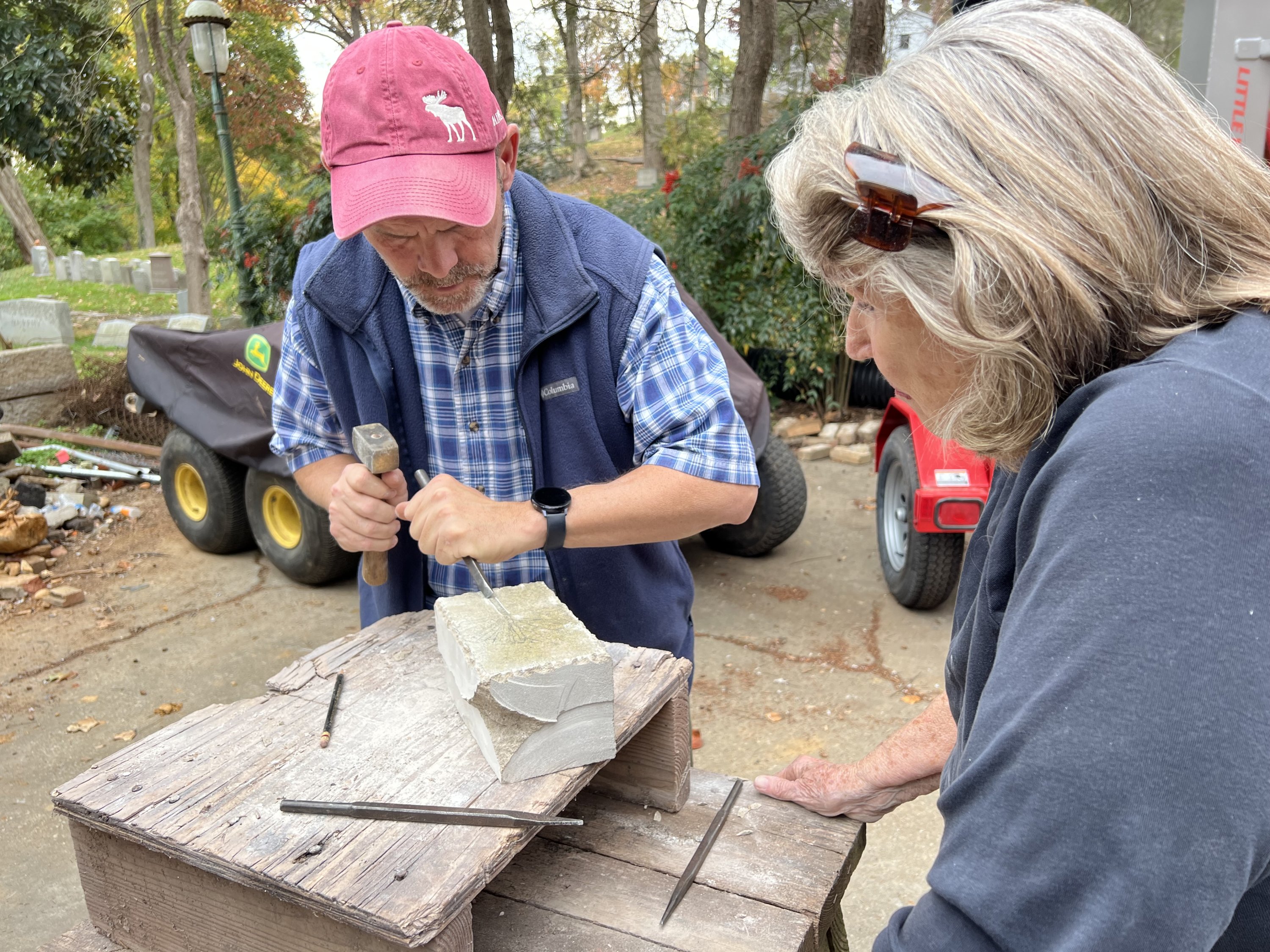
Stone carving is a method of creation through subtraction–removing stone to reveal artwork within it. Though the craft might sound archaic, Seferlis believes that it’s “alive and well.”
“Everywhere around you is an opportunity to do it because there’s so much stone around us,” he says. He looks at the city differently than others—noticing the cracks, patch jobs, and technical skill behind each structure as he walks down the street. “When we as carvers look at stuff, we look at it as restoration. We look at it as what was done and what needs to be redone.”
For instance, he points out a project in the cemetery that he’s “pumped about.” A non-carver might see the old Linthicum Dent mausoleum, surrounded by caution tape and falling to pieces, as a lost cause. Seferlis sees a two-year-long project he’ll take apart and restore stone by stone. “Like Legos,” he says.

There’s no shortage of work for carvers in DC, but there are challenges facing the future of the art. In a cemetery, headstones and even large mausoleums can be cut by machine, offering options that are more simplistic but affordable.
A stone carver offers personalization a machine can’t, as demonstrated by one of Seferlis’ students at a recent seminar, Gail Holle. The ginkgo leaf Seferlis guides Holle in carving is the same leaf she commissioned for her husband’s headstone on the other side of Oak Hill Cemetery. Working the stone is difficult for Holle and other beginners, but it’s satisfying.
“You don’t have to be artistic. You just have to want to do it,” Seferlis says. “And be patient.”

